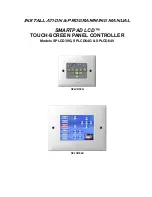
CyanoFluor U
ser’s Manual
Rev. A
13
3 Sample Analysis Guidelines
Take care not to spill samples into the sample chamber. Wipe up any spills promptly.
The cuvette MUST BE DRY on the outside when taking readings. Any moisture or
condensation on the outside of the cuvette can affect the reading.
Fill the cuvette with at least 3.5 mL volume (~
3
/
4
full).
Use the same cuvette for your samples, it is very important that you thoroughly rinse the
cuvette between samples. CyanoFluor is very sensitive, therefore cross contamination
between subsequent samples will skew results. Three rinses with the sample intended for
measurement will help flush out any residual and decrease the chance for cross
contamination.
Do not use a cuvette cap as it may cause the cuvette to not seat properly in the sample
compartment.
When handling the cuvette, hold it near the top.
Any bubbles in the sample will affect the readings. Take care not to introduce bubbles into
samples. Remove any bubbles by lightly tapping with your finger on the outside cuvette wall
or cover the top of the cuvette and tilt the sample to help dissipate bubbles.
Wait at least 3 seconds between consecutive measurements to allow the optics to return to
normal state.
All samples analyzed should be within the specified concentration range 0
– 100 µg/L;
Samples outside of that range should be diluted with artificial seawater or source water
filtrate to reduce inner filter and quenching effects.





































